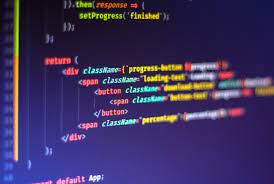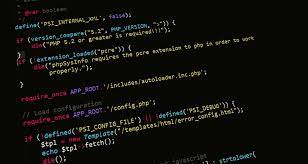Today, we are exposed to a huge variety of websites the credit goes to technological advancements in the digital space.
But what exactly is a website and what is it composed of? What are its types and how can we create them?
These questions are of utmost importance which is why today I’m going to discuss these questions in detail.
Table of Contents
What Is A Website?

A website refers to a collection and conglomeration of inter-related web resources on a given network.
These resources can be classified as web pages or multimedia content and are identified with the help of a common domain name.
Usually, websites are dedicated to one particular topic or genre which can be anything ranging from education to entertainment and business to health and hygiene.
Websites are either identified with the help of a network of public Internet Protocol (IP) such as the Internet or by employing a private local area network (LAN) through a URL which identifies the site.
Websites serve myriads of purposes and can be of varying types as well as natures.
Let us discuss a bit about these aspects of a website.
Types Of Website
Websites are of two types:
- Static
- Dynamic
Both these websites are quite contrary to each other in terms of their nature and purposes.
Let’s decode them one-by-one.
- Static Website
As suggested by the name itself, these websites are static and fixed in nature. They tend to display the exactly similar content for every single user which is mostly written either in client-side HTML or in CSS codes.
Static websites are purely informational in outlook are they usually appear with a fixed number of pages having a specific layout. This particular rigidity in terms of the structure of these sites is the prime reasons for their static nature.
Since the mechanisms involved in a static website are relatively less complex than the other types of websites, they are quite easy to create and time-efficient to use.

Therefore, if you are willing to create a website which is supposed to display similar content to all visitors, I’d suggest you create a static website.
- Dynamic Website
Dynamic websites are those websites which aim to display different content to their users.
These sites are highly functional as they rely on both server-side and client-side language scripts such as Java, ASP, or PHP.
With the help of advanced databases and programming, these websites help the user interact with the site on a significant scale.
Dynamic websites require a lot of efforts as compared to the static website as they are relatively more complex. However, they are immensely rewarding and popular among users.
After learning about the significance of various types of websites, you must be thinking of creating one for yourself.
But how to do that?
It’s simple, just keep on scrolling down for learning about the most effective website creation methods that are easy to use.
Here’s how.
Website Creation Methods

The two most potent methods to create an impactful website for your business are:
- Programming
If you are willing to create a static or interactive website for your niche, you can rely upon the application of common programming languages for the purpose of website creation.
These programming languages are highly effective and quite easy to follow upon. Some of the best languages available on the web are:
HyperText Markup Language

HTML is one of the most prominent programming languages which is used to create as well as design web sites and web pages.
This programming language is popularly known as a markup language as it has the availability of markup tags which are keywords having brackets around them.
Javascript
This language is quite similar to other conventional computer programming languages. Websites with Javascript allow its users to fulfil certain tasks on a website in order to interact with the content.
Its scripting language uses several functional calls in order to support the object-oriented elements.
JavaScript can be used in the form of PDF documents as well which is why it is highly recommended.
PHP

PHP is a server-side language in the form of a preprocessor hypertext, which basically means that PHP enables every activity to be processed on the server and not on the insides of the given browser.
This server tends to process a web page prior than displaying it to the user which is why it is highly admired.
A PHP code can either be easily embedded inside a normal HTML document or can be employed as a standalone file. However, in both cases, a server is required for installation purposes.
Cascading Style Sheets (CSS)

Cascading style sheets are a set of complementary programming languages which are used to effectively style the HTML markup code.
These languages are usually in consonance with each other but sometimes they can act in isolation as well.
This method of website styling proves to be incredibly beneficial for users as it allows site developers to transform the similar HTML elements on a given page without the requirement of changing it individually in isolation.
Therefore, CSS offers the website developers the chance to save their valuable time as well as allows them to test several design styles with a certain ease
- Content Management System (CMS)
CMS is a prolific software app which is popularly used for managing the creation as well as the modification of the digital content of a given website.
It is particularly used for web content management as well as for enterprise content management. The best CMS one can use to develop a website is WordPress. It is by far the most reliable CMS out there. Some other options when it comes to choosing a CMS besides WordPress include SquareSpace, Wix, Blogger, OpenCart, and so on.
All these website creation methods are highly effective and easy for users to apply.
If you don’t want to waste time learning how to code, I suggest you use WordPress. With its incredible library of themes and assortment of plugins, you can build any type of website you like.
